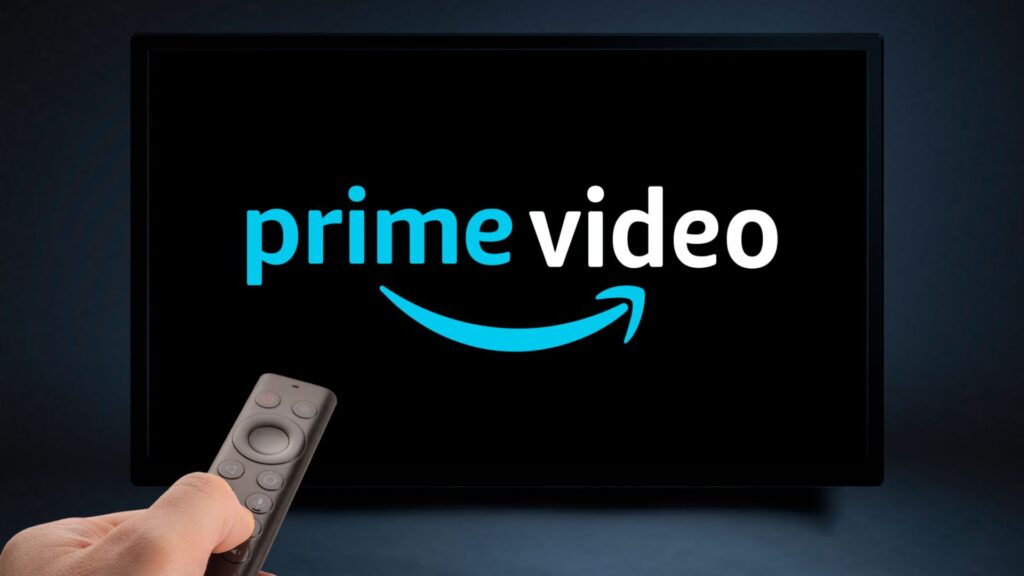
Brand network effects are essential for SaaS products because they create a self-reinforcing cycle that can lead to a significant competitive advantage and market dominance with strong brand recognition. To thoroughly explain this concept, we will utilize streaming companies as an example, as their services are one of the fastest-growing SaaS markets. As more people turn to streaming services for their entertainment, these companies have been able to leverage network effects to increase the value of their services. Network effects refer to the situation where the value of a service increases as more people use it. This article will discuss the concept of network effects, their impact on streaming companies, and some strategies for capitalizing on them.
What are Brand Network Effects?

Network effects refer to a situation where the value of a service increases as more people use it. For example, consider a social network. As more people join the network, it becomes more valuable to potential users, as they can form connections with a larger group of people. This leads to further growth in the network, creating a cycle of increasing value. Network effects can be particularly powerful for streaming companies, as they can benefit from increased user engagement.
The brand network effect can also be seen in other industries, such as retail. By having multiple brands in its network, a retail company can offer a wider variety of products and services to its customers. This can lead to increased customer loyalty and satisfaction, as customers can find the products they need from the same company. Additionally, having multiple brands in its network can help a retail company better manage inventory and pricing, as it can spread out the cost of goods across multiple brands.
Types of Brand Network Effects

There are two types of network effects — indirect and direct — and video streaming companies must understand how to balance the advantages of both in order to maximize their potential.
Indirect Network Effects

Indirect network effects refer to the idea that the more people use a service, the more attractive it becomes to others. This can be particularly beneficial for streaming companies because it increases the value of the service they offer. For example, if a corporation has a large user base, users are more likely to choose them over competitors. This, in turn, can lead to more growth, as more people become aware of the company and its services. Indirect network effects can lead to increased customer retention rates, as users are less likely to switch services when they have access to a large user base.
Indirect network effects can also lead to increased customer loyalty, as users are more likely to stay with a service if they have access to a large user base. This can be beneficial for streaming companies, as it can lead to increased revenue and profits. Indirect network effects can lead to increased innovation, as companies are more likely to invest in new features and services when they have a large user base. This can lead to increased customer satisfaction, as users are more likely to use the service if it offers more features and services.
Direct Network Effects

Direct network effects involve the idea that the more people use a service, the more valuable it becomes for existing users. This can be especially beneficial for streaming companies as it can drive organic growth. For example, if a company is popular with a certain demographic, that demographic is likely to use the service more often and share their experiences with friends and family. This increases the value of the service for existing users, leading to increased loyalty and word-of-mouth promotion.
Direct network effects can also lead to increased customer acquisition costs. As more people use the service, the cost of acquiring new customers increases as the company must compete with existing users for attention. This can be a challenge for streaming services, as they must balance the need to acquire new customers with the need to retain existing ones.
How Do They Work Together?

Indirect and direct network effects are not mutually exclusive. Instead, video streaming companies can leverage both types of network effects to grow their business. For example, indirect network effects can be used to drive user growth and attract new customers. Direct network effects can then be used to increase customer loyalty and engagement. By leveraging both types of network effects, these firms can maximize the potential value they receive from their user base.
For example, a streaming company can use indirect network effects to increase the number of users on their platform. This can be done by offering incentives to users who refer their friends and family to the platform. This will increase the number of users, which in turn will attract more content creators to the entire network. This will then lead to more content being available, which will further increase the number of users.
How do network effects benefit streaming companies?

Streaming companies have long been reliant on word-of-mouth buzz to build their customer base and gain traction in the market. This is because network effects create a snowball effect in which each new customer brings more potential customers with them, leading to a cascade of exponential growth.
Network effects can also have a positive impact on the retention rate of streaming companies. As more people join a streaming service, each user is more likely to stay because they will have a larger selection of content and features available. This can create an environment in which customers are more likely to stay with a service for a longer period of time, resulting in increased customer lifetime value.
Strong network effects can also lead to increased customer loyalty. As customers become more familiar with a streaming service, they are more likely to recommend it to their friends and family. This can lead to a snowball effect as more people join the service and become loyal customers. This can create a strong customer base that is more likely to stick with the service for the long term.
Case Study: Netflix and its Brand Network Effects

Netflix’s business model design is a prime example of how streaming companies can benefit from network effects. By investing in exclusive content such as “Stranger Things” and “House of Cards,” Netflix was able to create a unique and valuable library of content that could only be accessed through their service. This created a desire among users to stay with their service, and also attracted new users who were interested in accessing exclusive content.
Netflix has also been able to leverage its network effects to create a competitive advantage over other streaming services. By having a larger library of content, Netflix has been able to attract more users and increase its market share. The company has been able to use its network effects to create a more personalized experience for its users, allowing them to easily find content they are interested in. This has helped Netflix maintain its position as one of the leading streaming services.
Case Study: Amazon Prime and its Brand Network Effects

Amazon Prime is another streaming service that has been able to capitalize on network effects. By offering exclusive access to a wide range of content such as movies, TV shows, and music, Amazon Prime has been able to attract and retain customers. Additionally, through its Prime Video Channels feature, Amazon Prime is able to offer access to exclusive content from third-party providers to further enhance its value.
Amazon Prime also offers a variety of other benefits to its customers, such as free two-day shipping, Amazon Prime Pantry, and Amazon Prime Music. These additional benefits have helped further increase the value of Amazon Prime and create a loyal customer base. Furthermore, Amazon Prime has been able to leverage its network effects to create a competitive advantage over other streaming services.
The Role of Social Media in Creating Network Effects

Social media has been an important tool for streaming companies in leveraging network effects. By creating campaigns on social media networks such as Facebook and Twitter, these corporations can reach a wider audience and create engagement around their content. Many streaming services have also implemented features such as user reviews which allow users to share their experiences with their peers.
Social media also provides businesses with the opportunity to gain valuable insights into their user base. Through the use of analytics tools, streaming companies can track user engagement and gain a better understanding of their target audience. This data can then be used to tailor content and create more effective marketing campaigns.
Analyzing Customer Retention and Acquisition Through Network Effects

In addition to increasing the value of their service, streaming companies can use network effects to analyze customer retention and acquisition rates. By tracking user engagement over time, businesses can determine which strategies are working best in retaining customers. Similarly, they can track which strategies are most effective in acquiring new customers.
Analyzing customer retention and acquisition through network effects can help streaming companies identify areas of improvement and develop more effective strategies. For example, they can use data to identify which features are most popular among users and focus on improving those features. They can use data to identify which marketing campaigns are most successful in acquiring new customers and focus their efforts on those campaigns.
Strategies for Maximizing Brand Network Effects

While network effects provide streaming companies with an advantage, they must still adopt strategies and understand the key factors for strong network effects in order to effectively capitalize on them. These businesses can leverage brand network effects to their advantage by investing in different content from different channels and brands. This allows them to offer a variety of exclusive content that is not only diverse and interesting, but also tailored to different consumer segments. By having multiple brands in their network, firms can attract additional users and keep them engaged for longer.
Streaming companies should also focus on building relationships with their customers. This can be done by providing personalized experiences, such as tailored recommendations and exclusive offers. Strong connections with customers allow firms to increase customer loyalty and create a more engaged user base. Such strong network effects can lead to increased revenue and more sustainable growth in the long run.
Video streaming companies must actively promote their services through social media campaigns and user reviews. They should also focus on customer retention and acquisition by tracking user engagement over time.
Streaming companies should also consider offering discounts and promotions to encourage users to join their network. This could include offering an incentive for users, like a free trial period or discounted subscription rates. They should also consider partnering with others in the industry to offer bundled services, such as a video streaming service and a music streaming service. This could help increase the value of their network and attract more users.
Also, firms should focus on creating a seamless user experience across all platforms. This includes ensuring that the user interface is intuitive and easy to navigate, as well as providing a wide range of content that appeals to a variety of audiences.
Challenges that Streaming Companies May Face When Leveraging Network Effects

The primary challenge to implementing brand network effects in streaming platform business models is the cost associated with investing in different content from different channels. Streaming companies must invest significant resources in order to secure the rights to content from different channels. They must build strong relationships with content producers in order to ensure they have access to the latest offerings. Finally, these corporations must ensure their platforms are user-friendly so customers can find the content they are looking for quickly and easily.
Streaming companies must also consider the competition in the market. With so many streaming services available, it can be difficult to stand out, grow your market share and attract customers. They must find competitive strategies to differentiate their services and create unique experiences that will draw customers in. This could include offering exclusive content, special features, or discounts. Businesses must also ensure that their services are reliable and secure, as customers will not be willing to use a service that is prone to technical issues or security breaches.
Begin Leveraging Brand Network Effects With Teknicks

Network effects provide streaming companies with an advantage that can be leveraged to increase the value of their services. By creating original content that can only be accessed through their service, actively promoting their services on social media, and tracking user engagement over time, these firms can maximize the benefit of network effects and increase customer retention and acquisition rates.
However, subscription video on demand (SVOD) growth agencies like Teknicks specialize in developing unique strategies and roadmaps for streaming companies to grow their product. If you are looking for more information and want to begin your journey to sustained growth, schedule a free subscriber growth strategy meeting today.